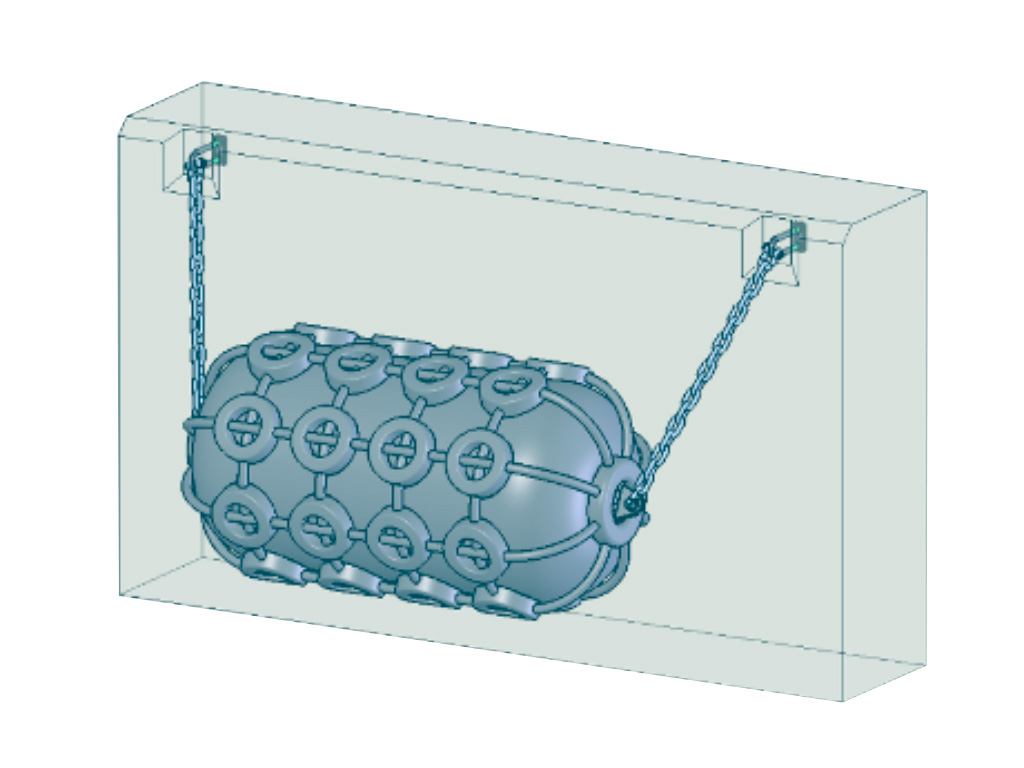Pneumatic and foam fenders, like cylindrical fenders have a “progressive” force/deflection curve when compressed. Depending on their size, they can absorb high levels energy absorption and have a low reaction force and hull pressure that makes them ideal for protection for sensitive cargos such as LNG vessels and oil tankers. They can be used for most vessel types, being portable and able to float, they can be deployed quickly to different locations within the harbour, which could be particularly useful in the event of an accident. There are many companies throughout the world which hire them out for short to medium term usage.
Their limitations would be: That they are very large compared to equivalent energy capacity conventional fenders; their increased stand-off may reduce the effectiveness of other port infrastructure equipment such as cranes. If they are not able to bear against a flat solid surface, a large breasting panel might be necessary to support them and prevent loss in performance, this is particularly the case with open piled jetty structures. Where ports have large tidal ranges, a suitable mooring chain system must be installed to prevent the fender from drifting off the berth.


